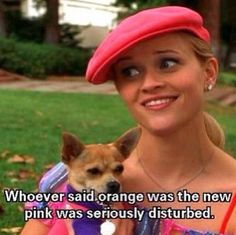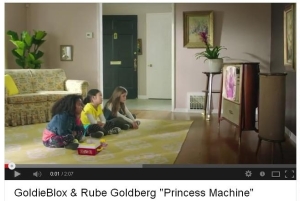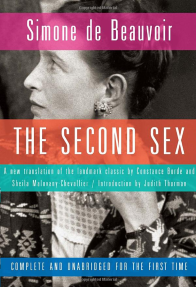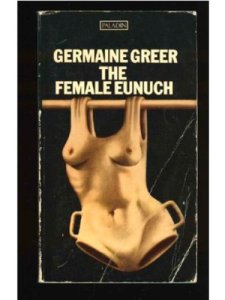 Every week there seems to be a new story about how offended we should be about a new product marketed especially to women. You know the deal, it’s usually a rather ordinary object (like a pack of pens) that is selling itself as:
Every week there seems to be a new story about how offended we should be about a new product marketed especially to women. You know the deal, it’s usually a rather ordinary object (like a pack of pens) that is selling itself as:
– PINK!
– FOR HER!
– GLITTERY!
– JUST FOR GIRLS!
And of course, this is deeply annoying. It seems to reinforce the idea of woman as the “marked” gender and man as the “normal”, natural state of things. It feels patronising and seems to reduce women’s interest to a colour, as if the marketing executives are using Elle Woods from Legally Blonde as their model woman.
 And you know, I love Elle Woods. My phone case is pink. I like the idea of wearing pink on Wednesdays (though I always forget). But I don’t want my interest in the world to be reduced to pink. On the other hand, if I want a pink version of something, so be it. Sometimes I like pink.
And you know, I love Elle Woods. My phone case is pink. I like the idea of wearing pink on Wednesdays (though I always forget). But I don’t want my interest in the world to be reduced to pink. On the other hand, if I want a pink version of something, so be it. Sometimes I like pink.
Venturing into the land of children’s toys however, presents a more complicated problem. Girls’ sections are a pinkwash of epic proportions. Understandably, this upsets a lot of parents.

In her book Living Dolls (2010) Natasha Walter argues that this “pinkification” of girlhood is in part responsible for contemporary raunch culture in so far as girls aspire to be like the dolls they play with – sexy, passive and plastic-looking. Others are also on the “kill pink” mission: UK site Pinkstinks states “We believe that all children – girls and boys – are affected by the ‘pinkification’ of girlhood. Our aim is to challenge and reverse this growing trend.”
Challenging traditional roles and stereotypes (and not just for girls) sounds great. But when you look at what exactly gets targeted in this, a lot of what’s being lumped under problematic “pinkification” is literally just pink stuff, as this screenshot from their front page shows:
Now, I get that the fact if girls stuff is always pink that’s super boring; just as I described with the case of adult women, girls shouldn’t be reduced to a colour. I also understand that a lot of the stuff that these sites campaign against are things marketed at girls to encourage the to be homemakers or princesses or beauty-obsessed people. Obviously the problem is that there’s not a diversity of options being put on the table for girls. Like we tend not to tell girls: you could be a mother AND/OR a builder AND/OR an engineer AND/OR a makeup artist (though I have to say, Barbie has done a good job of having a lot of different occupations).
But I think one thing that often gets missed in all this is that a lot of toys marketed to girls are just sometimes boring compared to what boys are encouraged to play with. The much heralded Goldie Blox came along last year to try and introduce engineering concepts to girls. Again, pink became a signifier of all that is problematic about how toys are gendered, as we see in this opening shot from one of their ads (kids on screen dancing around in pink, girls watching super bored):
 Now, I should note here that in the actual Goldie Blox product, there are a few pink pieces (like a ballerina dolphin – rad). But the point is, clearly the rhetoric of Goldie Blox is trying to tap into anti-pinkification sentiments.
Now, I should note here that in the actual Goldie Blox product, there are a few pink pieces (like a ballerina dolphin – rad). But the point is, clearly the rhetoric of Goldie Blox is trying to tap into anti-pinkification sentiments.
And the thing is, it turns out Goldie Blox itself is really boring for a lot of kids. It doesn’t have the imaginative radical potential of other toys, like Lego, that also teach principles of engineering. The problem isn’t pink, it’s the actual toys.
Speaking of Lego, this recent article reflects on how Lego has changed its marketing to girls over the years, with the girl from the 1981 “What it is is beautiful” ad showing how boring Lego “for girls” has become.

There is a great point here: going from blocks that can become anything, to already-built pieces that have pre-determined (and often gender stereotypical) story lines is lame-o-rama. But so much of the article focuses on pink – for example they point out several times that in the original ad the girl is “without a hint of pink”. Pink has become symbolic of all that is wrong with the gendering of toys, and as a result pink is often one of our main targets, rather than judging toys on their capacities.
 When I was a kid I had to beg for a Barbie doll. When I eventually got one, it had blonde hair and this AMAZING pink disco outfit with a light on her belt that would flash on and off when you turned it. She had permanently bent elbows, which annoyed me because she was kind of hard to move about. I then obtained a second Barbie and a Ken Doll from an older best friend. I cut Disco Barbie’s hair short and she shacked up with new Barbie, who liked to wear ballgowns. They lived with Ken in a suitcase apartment that I made, with a white plastic cat. They had good queer times together.
When I was a kid I had to beg for a Barbie doll. When I eventually got one, it had blonde hair and this AMAZING pink disco outfit with a light on her belt that would flash on and off when you turned it. She had permanently bent elbows, which annoyed me because she was kind of hard to move about. I then obtained a second Barbie and a Ken Doll from an older best friend. I cut Disco Barbie’s hair short and she shacked up with new Barbie, who liked to wear ballgowns. They lived with Ken in a suitcase apartment that I made, with a white plastic cat. They had good queer times together.
There were lame aspects of pink Disco Barbie, like her immobile limbs (perfect for cuddling other Barbie though), but the pink wasn’t the issue. I was still inventive with my Barbies and though they never taught me about structural engineering, I had fun with them. Some of the “girly” toys I wanted in childhood were really inert and useless, like Fairy Winkles, but they weren’t bad because they were pink. I’m pretty sure that at the end of the day I was just subject to marketing and a desire for “status” like all the other kids (like, when I got connector pens I thought I was so cool).
I think we should promote kids to be interested in a range of dynamic stuff. But at the end of the day it’s not pink that stinks, it’s our attitude to gender that matters.















